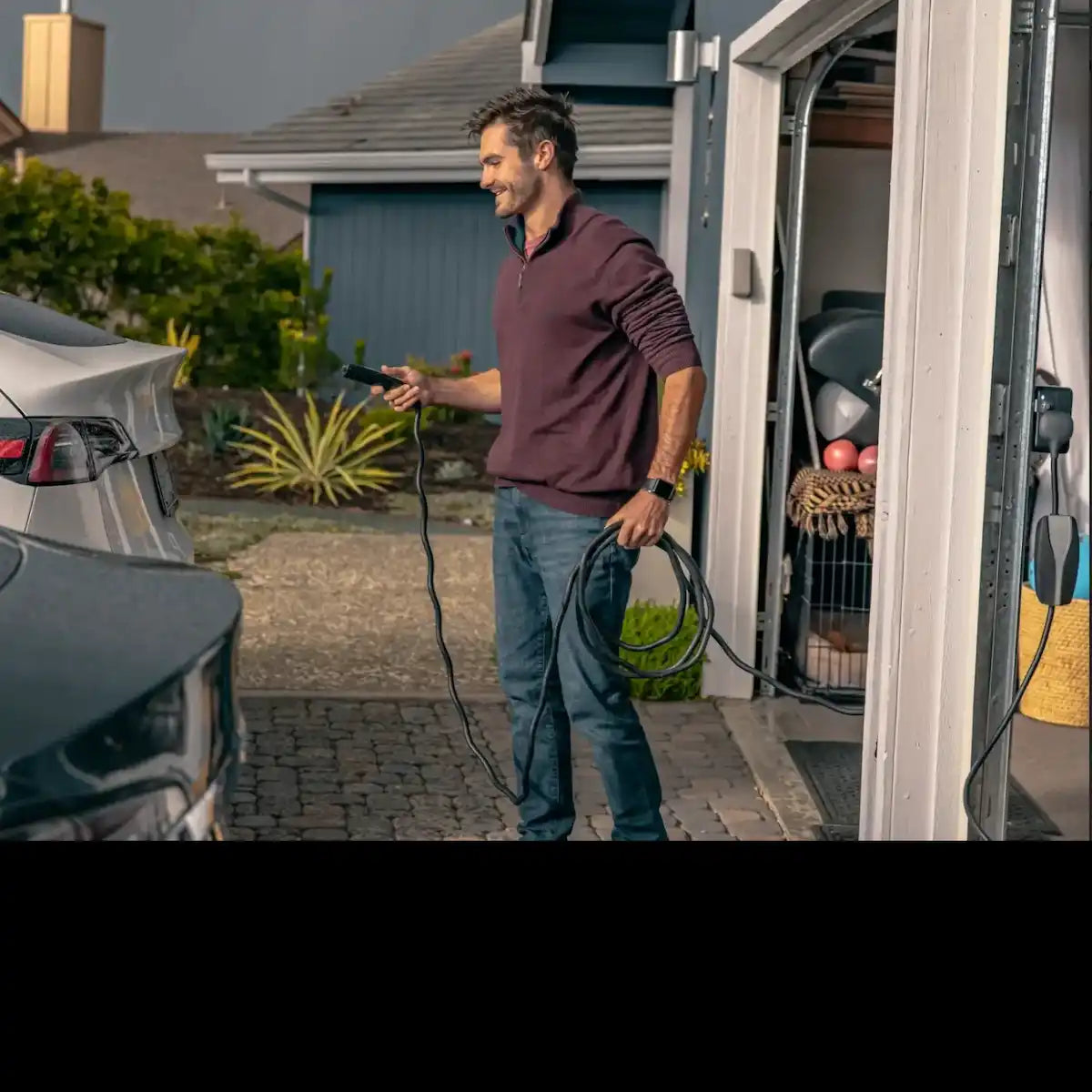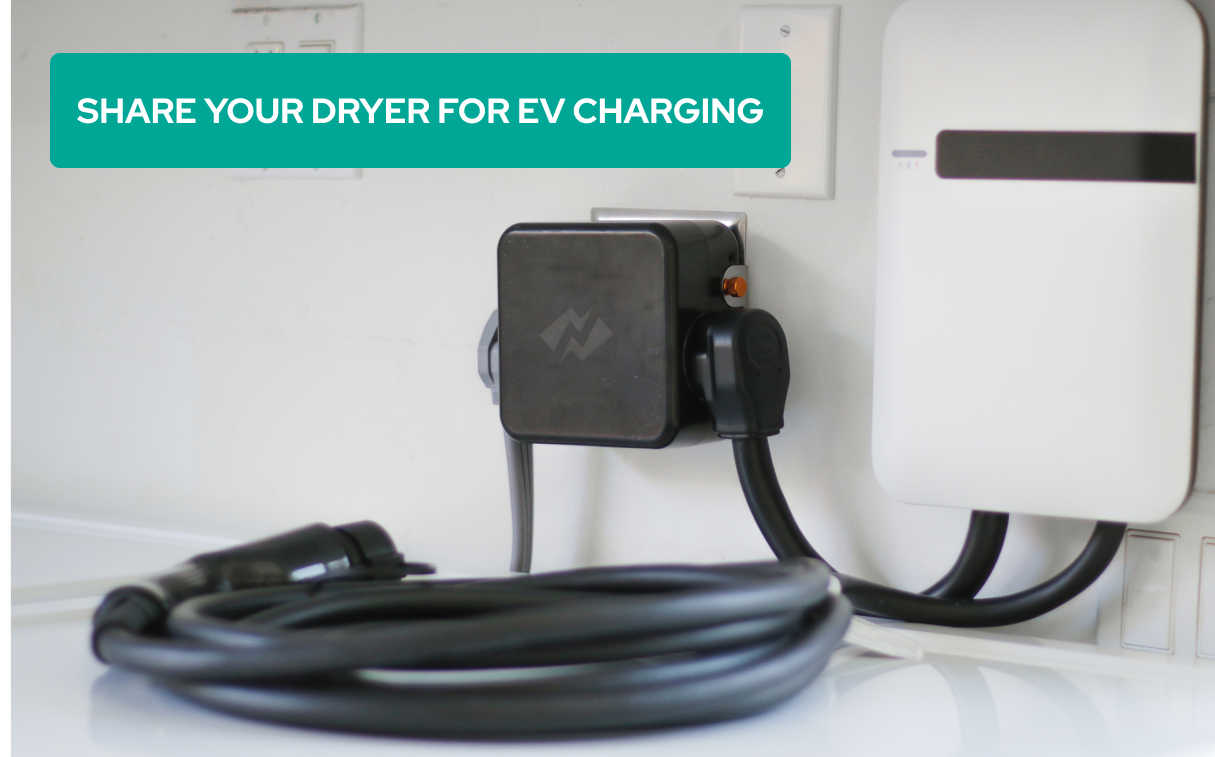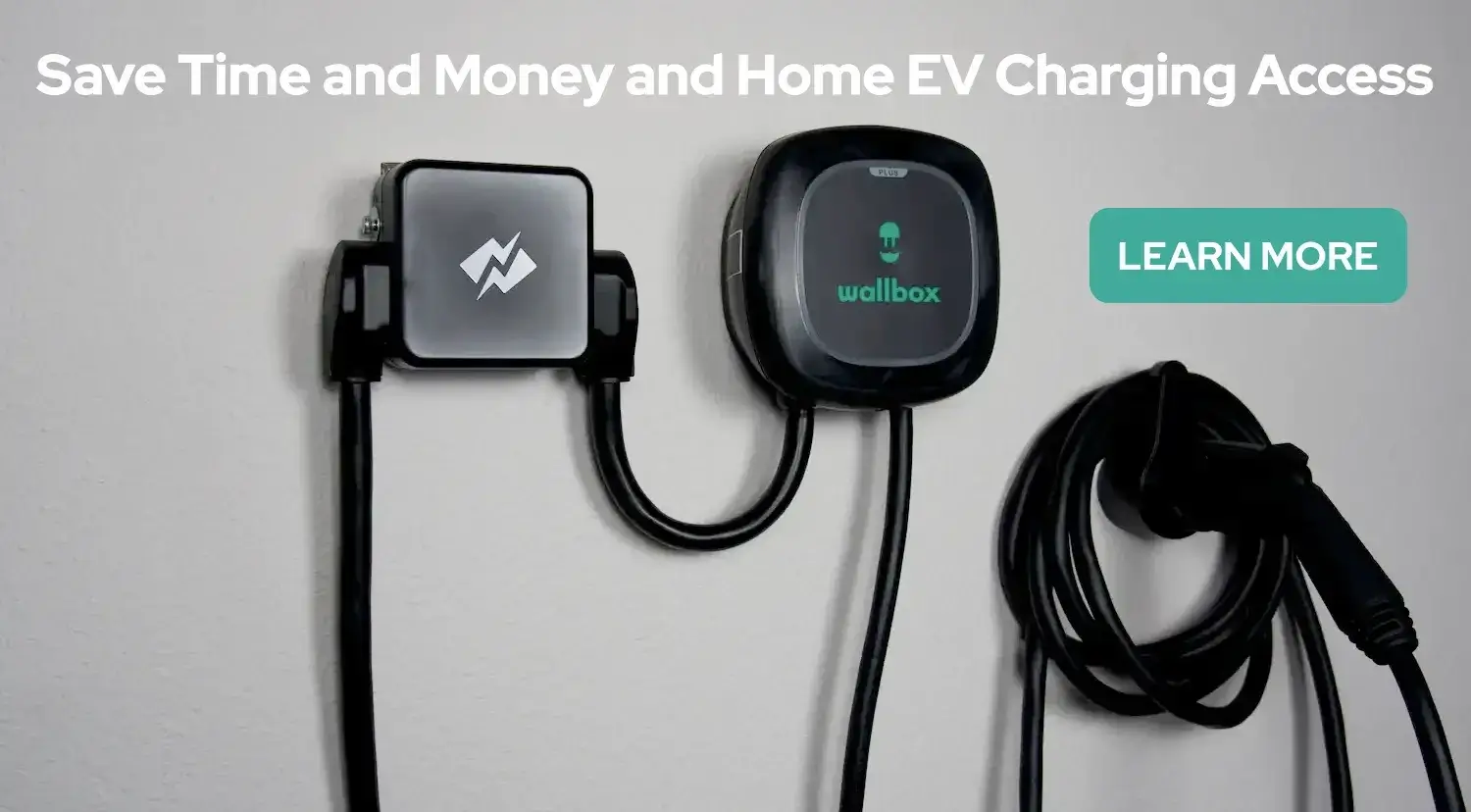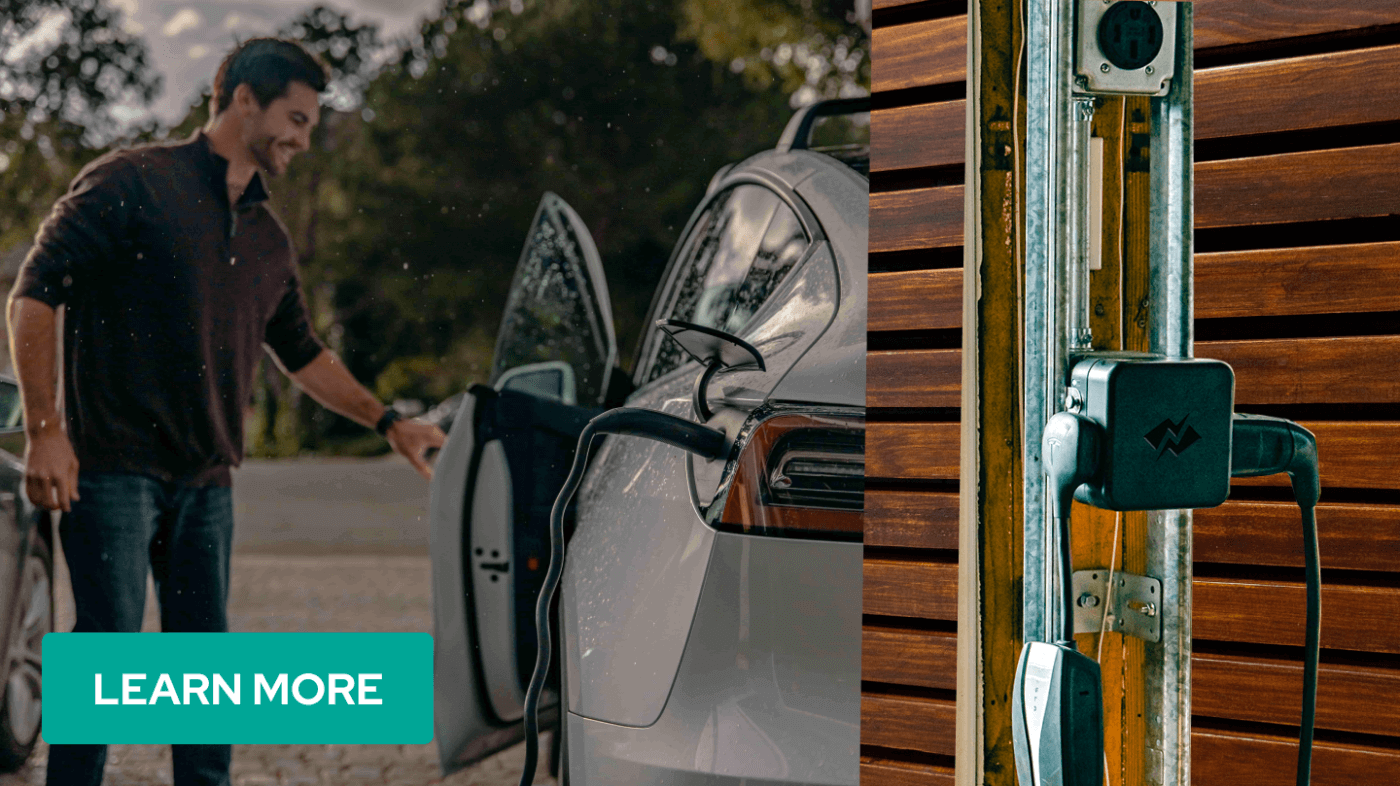Refueling a gas or diesel-powered car is relatively straightforward. You pull up to any gas station, insert a credit/debit card, select one of four fuel blends, and insert the gas pump into the tank. The entire process takes a matter of a few minutes and you’re quickly off on your way.
This process is so familiar that you could probably do this in your sleep (though we don't recommend trying this...). With over 100 years in development, gas stations are at nearly every corner or highway stop. The infrastructure is so extensive, you can drive anywhere in the U.S. at a moment's notice.
Quite soon, all of this is about to change. Through breakthroughs in battery and electric motor technology, electric cars are just now breaking into the mainstream. While electric vehicles (EVs) cost less to operate and pollute a whole lot less than gas or diesel cars, they are (at first) a bit more complicated to charge than refueling gas. Electric cars are also convenient because you can wake up in the morning with the full charge you need by charging at home. This has been made even easier with the NeoCharge Smart Splitter by sharing your 240V outlet at home to save money on expensive installations.
The Three Levels of Electric Car Charging
Charging an electric car, however, is a much different experience than refueling a gas or diesel vehicle. Instead of a few minutes, charging an EV can take anywhere from 30 minutes to over 30 hours. This is because there are actually three levels of electric car charging. Each level of charging is defined by the amount of voltage, which directly correlates to the speed or quickness of the charging session. Level 1 (120V) is the slowest, followed by Level 2 (240V), and finally Level 3 (400+V).

Of course, over 30 hours to charge an EV may sound incredibly inconvenient. However, the key differences between the three levels of electric car charging gives each level a reasonable time and place. Most importantly, no matter which of the three levels of electric car charging, by the end of this article you may find it actually more convenient than refueling gas.
Let’s get started!
Level 1 EV Charging
Fast Facts:
- Location: Residential
- Voltage: 120V
- Charging Rate: 4 miles/hour
- Charging Duration: 30+ hours
The first of the three levels of EV charging is via a regular household outlet, 120 Volts (V), and an Electric Vehicle Supply Equipment (EVSE for short but more commonly known as the “charger”). The EVSE is really just a fancy extension outlet as the actual charger is located on-board the vehicle.
Level 1 utilizes a 120V outlet, which is the standard residential outlet for nearly all of your everyday devices such as refrigerators, TVs, or even your phone. This level of EV charging is only found at residential locations. In fact, Level 1 charging is routinely known as “trickle charging” due to its slow speed.
A typical EV can recharge around 4 miles of range per hour with Level 1 charging.
Since the vast majority of charging is done at home, overnight. This makes Level 1 charging a formidable option for drivers. Overnight, Level 1 charging provides around 50 miles of range. With most American’s commutes being less than 50 miles, Level 1 charging, despite how apparently slow, is sometimes a good option.
To fully recharge an all-electric car, it can take over 30 hours on Level 1. Yes, that is quite a while. That being said, Level 1 charging is the slowest speed and for residential locations, there is a faster solution. More on that next.
Level 2 of EV Charging
Fast Facts
- Location: Residential, Commercial
- Voltage: 240V
- Charging Rate: 12-30 miles/hour
- Charging Duration: 8-12 hours
Level 2 charging is the next level in the EV charging world. In fact, some would even argue that it is the best option for charging at home. Level 2 charging can be found at both residential and public charging stations.
In residential applications, Level 2 charging utilizes a 240V outlet. This makes it much quicker than Level 1. With double the voltage, a 240V outlet is typically used with high-powered appliances such as an electric dryer, water heater, or range.
Level 2 charging provides around 12-30 miles of range per hour. To fully recharge an all-electric car will take around 6-12 hours depending on the battery size.
Like Level 1, Level 2 charging is best used overnight. Since electricity rates are cheaper overnight and since you sleep at night, Level 2 charging is really convenient for your wallet and your time! Charging your car at home is like having a gas station at your house--think of all the time you would save. Plus, every day you wake up the EV is charged to 100% leaving you free of any range anxiety.
To charge on Level 2, not only will you need a 240V outlet, but also a separately purchased charger. The one that comes with the car is almost exclusively only for Level 1. A Level 2 charger costs around $300 to $700.
Unfortunately, most garages do not frequently have a spare 240V outlet, unlike the Level 1 120V outlet. Therefore, an electrician is needed to install the new, dedicated 240V outlet. In some events, the electrical panel may need to be upgraded. All of this can cost upwards of $2,500 for a panel upgrade.
Fear not! NeoCharge has a Level 2 charging solution for you! If there is a 240V outlet in the garage that is currently occupied by another appliance like the dryer, you can simply plug in the Smart Splitter to unlock two 240V outlets from one. The Smart Splitter was created to automatically switch power to the device in need and, most importantly, can save you hundreds, if not, thousands of dollars from unnecessary electrical work.
Learn more about the Smart Splitter to see how you can save on your home EV charging project.
Level 3 of EV Charging
The last of the three levels of electric car charging is Level 3. More commonly known as DC Fast Charging, DC Fast Charging utilizes over 480V. Great Scott!

Due to the high power, DC Fast Charging is only found at commercial charging stations. Additionally, there is no EVSE with DC Fast Charging stations as the station itself is the charger. This is because Level 3 charging utilizes DC power whereas Level 1 and Level 2 utilizes AC power. The on-board charger discussed earlier is only for AC power.
DC Fast Charging consists of charging networks, just like gas stations. Rather than Shell or Chevron, there is Electrify America and EVgo. Through these networks, there are thousands of charging stations across the country.
As of 2021, there are over 40,000 stations. Even more, the charging infrastructure has developed to a point where it is possible to travel coast to coast! That is 3,000 miles of pollution-free travel!
Charging on a DC Fast Charging station will provide around 3-15 miles/minute. Yes, as hinted in the name, DC Fast Charging is so much quicker than Level 1 or Level 2 charging, that it is measured in minutes rather than hours. However, the more common unit of measurement is time to charge the battery to 80%. With this metric, DC Fast Charging typically can recharge a car to 80% in around 30 minutes.
Why 80% and not 100% you ask? Well EV batteries, like all other batteries, don’t necessarily like to be charged all the time to 100%. Therefore, manufacturers have designed the car to throttle the charging speed beyond 80% to ensure battery performance over the years.
All this being said, it is best to only charge to 80% while using a DC Fast Charging station. While charging on Level 1 or Level 2, feel free to charge to 100%.
During the quick 30 minute charge, EV drivers are able to grab a quick bite to eat or use the restroom. Since you can complete other tasks while the car charges, it is not time wasted waiting on the car as you do with gas. Once you complete your other activities, you can simply unplug and get back on the road again.
Level 3 Charging Fast Facts
Location: Commercial
Voltage: 480+V
Charging Rate: 3-15 miles/minute
Charging Duration: 30 minutes to 80%
Summary of the Three Levels of Electric Car Charging
Here is a summary of the three levels of electric car charging into a few bullet points:
- Level 1 (trickle charging) charging provides 4 miles per hour and can replenish the battery for reasonable commutes
- Level 2 charging can charge an EV at home or at a public charging station
- Level 2 charging provides around 12-30 miles of range per hour
- The Smart Splitter is a great way to save hundreds of dollars on a Level 2 home charger installation
- When not charging at home, there are thousands of public charging stations to use
- DC Fast Charging (Level 3) is the quickest way to charge
- DC Fast Charging can charge an EV in 30 minutes
- After some experience, charging an EV becomes second nature (plus don’t forget the fuel savings and no emissions!)
Charge on!












